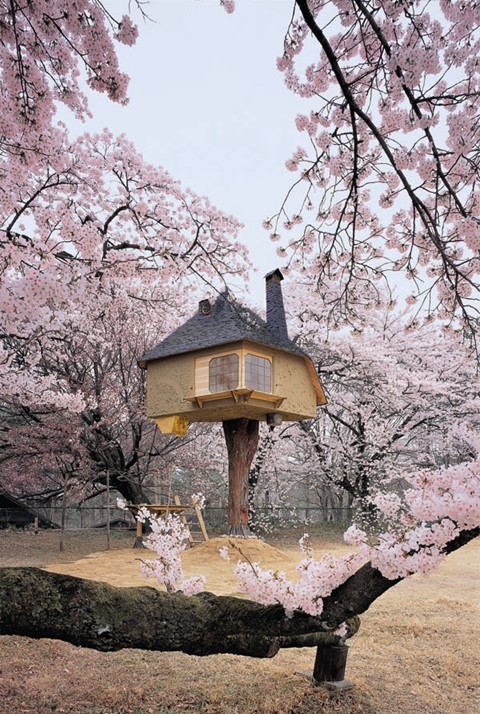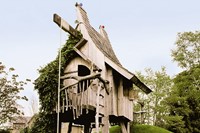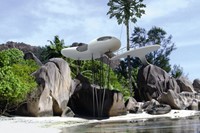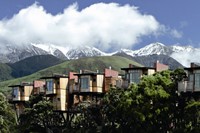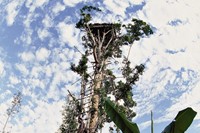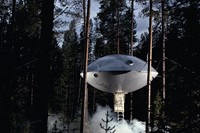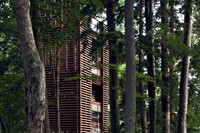The title says it all: Taschen’s new book celebrates a dizzying array of fantastical architectural feats, all perched high among the trees. Whether from necessity, or a desire to be closer to nature...
The title says it all: Taschen’s new book celebrates a dizzying array of fantastical architectural feats, all perched high among the trees. Whether from necessity, or a desire to be closer to nature, or in pursuit of isolation from the stresses of the world below, people have dwelt in trees for thousands of years – from the tribesmen and women of Indonesia, to aristocrats such as Cosimo I de’ Medici in their custom-made retreats, to eco-warriors in Newbury in the mid-1990s. There is something undeniably Edenic about living and sleeping so close to nature. Philip Jodidio, author of Taschen’s Architecture Now series, has scoured the earth for the most innovative, whimsical tree houses, all beautifully photographed in this bible to alternative living. A house shaped like a bird’s nest; a wooden sphere; a futuristic UFO-style pod, and a trompe l’oeil mirror cube are just some of the spectacular designs to be found therein. AnOther spoke to Philip about the process of compiling such a book, and why the romance of tree dwelling shows little sign of waning.
How did you go about researching the book and locating all these fantastic places?
One thing leads to another when working on a book like this one. Since the designers of tree houses are often in touch with each other, many of the locations were discovered thanks to help from designers, while more traditional architects with whom I work on Taschen’s Architecture Now series recommended others. Finally, I look through publications or websites and when I see something I like I contact the designer and ask if they have anything new.
Why do you think tree houses are such increasingly sought after spaces?
Tree houses are a refuge in more sense than one. They are a way to get away from the everyday world and its problems, but also, for some, a way to live a childhood fantasy. The publisher gave my book the subtitle “Fairy Tale Castles in the Air,” which may sum up the appeal of tree houses both to adults and to children.
"His Tetsu Teahouse is perched in the garden of the Kiyoharu Shirakaba Museum in Yamanashi Prefecture in Japan. It is a tiny structure meant for the tea ceremony but also and above all, for viewing cherry blossom"
Do you have a favourite tree house, both in terms of design but also location?
Since I write most often about contemporary architecture, I would select a tree house designed by Terunobu Fujimori, a Japanese professor who is noted for his off-beat buildings. His Tetsu Teahouse is perched in the garden of the Kiyoharu Shirakaba Museum in Yamanashi Prefecture in Japan. It is a tiny structure meant for the tea ceremony but also and above all, for viewing cherry blossom.
What is it about being up in the trees that remains such a potent romantic fantasy?
It represents a return to sources – when early men didn’t live in caves, they most probably climbed trees to escape enemies. It was for protection. Early tree houses became privileged locations for such historic figures as Cosimo I de’ Medici (1519-1574), who received guests in a grandiose sylvan setting. The myth of Arcadia, of a better, more natural world, has haunted so many times and people that one need not look far to see the appeal of tree houses, whence the (real) title of my text I Also was an Arcadian. From the idea of the tree of life that runs through religion and philosophy to “fairy tale castles in the air,” there is no shortage of philosophical, mythological or even escapist explanations for the durable appeal of tree houses.
Tree Houses: Fairy Tale Castles in the Air is out now, published by Taschen.
Text by Laura Allsop
